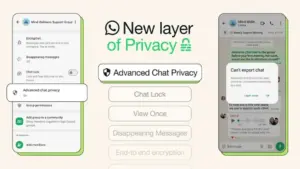- In addition to the bans announced in the last week of July, Bangladesh announced fresh bans on TikTok and YouTube this Friday.
- It all started on July 17 when mobile internet was disabled in response to the growing protests against the quota reforms.
- As a result of these protests, the Supreme Court has finally reduced the reservation from 30% to 5%. But the protests will go on until all the demands of the protestors are met.

Many popular messaging and social media sites such as WhatsApp, Instagram, TikTok, and YouTube have been banned in Bangladesh.
Let us give you a rundown of the events:
- It all started on July 17 when mobile internet was disabled for the first time.
- The very next day on July 18, broadband services were also shut down.
- Then sometime between July 17 and July 31, a restriction was imposed on the usage of Facebook, Messenger, WhatsApp, and Instagram.
- On July 23, broadband services were partially restored but mobile internet remained unavailable till July 28.
- The latest ban on TikTok and YouTube was announced this Friday around 12:15 PM.
According to reports, the latest restrictions have only been affecting mobile connections so far. Broadband connections remain unaffected. But nevertheless, this is a massive ban because the country has more than 120 million mobile network users.
The reason is the same – the ongoing protests against quota reforms in the country.
What Was the Cause of the Protest?
Students from all over the country were fighting against a controversial reservation system in which 30% of the government jobs were reserved for descendants of those who fought for the country in the 1971 War of Independence.
According to them, the quotas unjustly favor supporters of the governing Awami League party, the ones that led the war of independence against Pakistan.
This led to widespread demonstrations by students across the country, which quickly turned fatal and resulted in more than 200 deaths. Apparently, both the police and groups linked to the current governing party attacked the protestors.
Finally, after more than 2 weeks, the Supreme Court sided with the protesters and reduced the reservation from 30% to 5%. Out of the rest, 93% of seats will be given on merit and the remaining 2% are reserved for ethnic minorities and transgender and disabled people.
But the protests are still going on. The campaigners have decided to continue demonstrations until those who have been wrongly jailed are released and the officers who are responsible for causing violence resign.
Is Censorship Really the Best Way to Deal with Such Protests?
It’s hard to say whether censorship is the best way to deal with it but it’s definitely the most popular one. Censorship during riots prevents the spread of hateful content that can further fuel negative emotions. In some cases, countries like North Korea and China use censorship to control their people.
Basically, when communication is hindered, so is unity. And if you manage to prevent the spread of content, the ideas and propaganda associated with can also be stopped.
However, there is a lot of debate about the ethical compass of such blackouts since they sabotage citizens’ right to freedom of speech. Along with misinformation, it also blocks the flow of correct information. Modern autocratic governments often use this tool to curb such uprisings. It remains to be seen how long will this ban in Bangladesh continue and when will the situation return to normal.
 Our Editorial Process
Our Editorial Process
The Tech Report editorial policy is centered on providing helpful, accurate content that offers real value to our readers. We only work with experienced writers who have specific knowledge in the topics they cover, including latest developments in technology, online privacy, cryptocurrencies, software, and more. Our editorial policy ensures that each topic is researched and curated by our in-house editors. We maintain rigorous journalistic standards, and every article is 100% written by real authors.



